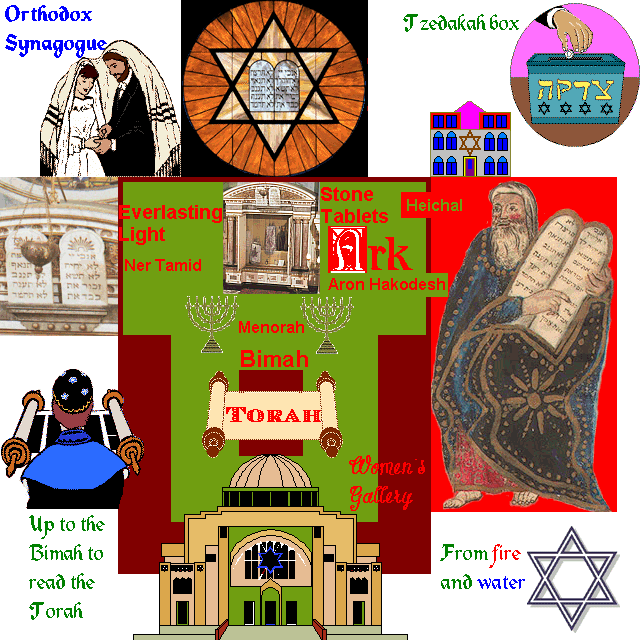
The first Temple by Solomon was destroyed in 586 BCE and Jews taken in exile to Babylon. They may have needed meeting places, which is all a synagogue means (see names below for functions). After returning in 538 BCE, synagogues may have existed in addition to the rebuilt Temple by Ezra and Nehemiah (completed by Herod), the only place for sacrifices. There was a command to visit the Temple three times a year but the synagogue provided an alternative. The evidence is patchy however with Egyptian prayer houses in the Greek language in Egypt in 200s and only specifically until the 000s BCE in Palestine and Babylon for prayer. It could have grown with Greek speaking Jews outside Palestine but in Palestine prayer may not have been a function. In the 000s CE scripture reading but not necessarily prayer will have taken place in the synagogue. In 70 CE the Temple was destroyed without subsequent replacement, leaving synagogues as the only public meeting places and therefore places of prayer.
Names:
| Bet Haknesset (formal term, Talmud) | House of Assembly |
Fellowship |
| Bet Hatephilah | House of Prayer |
Worship |
| Bet Hamidrash | House of Study |
Educational |
| Shul (common term) | School | Educational |
Ha is the formal definite article and can be removed in each case. So there are many functions combined in a synagogue.
Synagogues have no set form except they must have windows. An Orthodox synagogue separates women by an upper gallery, a screen and maybe different doors in and out as well. The reason is that according to the Talmud women are a distraction to men when at prayer. Reform and Liberal synagogues mix the sexes.
The Bimah is a raised area for the Torah and can be anywhere in the synagogue although the Shulchan Aruch (Halakah Code by Rabbi Joseph Caro, 1500s) states that its central position is so everyone can hear it. Reform and Liberal synagogues generally out it in front of the Ark.
The Ark or Aron Hakodesh was a box but since the Middle Ages it has been a cupboard fixed on the east wall. The original Holy Ark, was the wooden box covered in gold kept in the wilderness Tabernacle and lost at the time of the destruction of the first Temple.
The Tablets or Heichal represent the Ten Commandments and are placed above the Ark. They give the first two words of each commandment or other texts from the Talmud.
The Everlasting light or Ner Tamid also hangs above the Ark and can still be oil or an electric light. It is a late development from around the 1700s but refers back to the oil lamp burning all the time in the Tabernacle.
The Menorah comes from the Temple and has seven branches.
The synagogue may contain a sukkot for the Feast of Tabernacles. It will have a roof that is open or opens to have plant life laid on it.